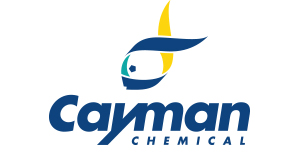Ganglioside GM1 (bovine) (sodium salt), CAS 37758-47-7
Ganglioside GM1 (bovine) (sodium salt), CAS 37758-47-7
Artikelnummer
CAY41206-5
Verpackungseinheit
5 mg
Hersteller
Cayman Chemical
Verfügbarkeit:
wird geladen...
Preis wird geladen...
Formulation: A solid
Purity: ≥98%
Formula Markup: C73H130N3O31 • Na (for stearoyl)
Formula Weight: 1568,8
Shelf life (days): 730
CAS Number: 37758-47-7
Notes: Ganglioside GM1 is a monosialylated ganglioside and the prototypic ganglioside for those containing one sialic acid residue.{31218,52660} It is found in a large variety of cells, including immune cells and neurons, and is enriched in lipid rafts in the cell membrane.{53951} It associates with growth factor receptors, including TrkA, TrkB, and the GDNF receptor complex containing Ret and GFRα, and is required for TrkA expression on the cell surface. Ganglioside GM1 interacts with other proteins to increase calcium influx, affecting various calcium-dependent processes, including inducing neuronal outgrowth during differentiation. Ganglioside GM1 acts as a receptor for cholera toxin, which binds to its oligosaccharide group, facilitating toxin cell entry into epithelial cells of the jejunum.{53952,53953} Similarly, it is bound by the heat-labile enterotoxin from E. coli in the pathogenesis of traveler's diarrhea.{53954} Ganglioside GM1 sensitizes inactivated T cells to TNF-α-induced apoptosis and induces apoptosis of activated T cells even in the absence of TNF-α.{52850} Ganglioside GM1 is found at higher levels on T cells isolated from patients with renal cell carcinoma (RCC) compared with T cells from patients without cancer. Levels of ganglioside GM1 are decreased in the substantia nigra pars compacta in postmortem brain from patients with Parkinson's disease.{53951} Ganglioside GM1 gangliosidosis, characterized by a deficiency in GM1-β-galactosidase, the enzyme that degrades ganglioside GM1, leads to accumulation of the gangliosides GM1 and GA1 in neurons and can be fatal in infants.{31218} This product contains ganglioside M1 molecular species with primarily C18:0 fatty acyl chain lengths. As this product is derived from a natural source, there may be variations in the sphingoid backbone. [Matreya, LLC. Catalog Nos. 1555, 1555-50].
Purity: ≥98%
Formula Markup: C73H130N3O31 • Na (for stearoyl)
Formula Weight: 1568,8
Shelf life (days): 730
CAS Number: 37758-47-7
Notes: Ganglioside GM1 is a monosialylated ganglioside and the prototypic ganglioside for those containing one sialic acid residue.{31218,52660} It is found in a large variety of cells, including immune cells and neurons, and is enriched in lipid rafts in the cell membrane.{53951} It associates with growth factor receptors, including TrkA, TrkB, and the GDNF receptor complex containing Ret and GFRα, and is required for TrkA expression on the cell surface. Ganglioside GM1 interacts with other proteins to increase calcium influx, affecting various calcium-dependent processes, including inducing neuronal outgrowth during differentiation. Ganglioside GM1 acts as a receptor for cholera toxin, which binds to its oligosaccharide group, facilitating toxin cell entry into epithelial cells of the jejunum.{53952,53953} Similarly, it is bound by the heat-labile enterotoxin from E. coli in the pathogenesis of traveler's diarrhea.{53954} Ganglioside GM1 sensitizes inactivated T cells to TNF-α-induced apoptosis and induces apoptosis of activated T cells even in the absence of TNF-α.{52850} Ganglioside GM1 is found at higher levels on T cells isolated from patients with renal cell carcinoma (RCC) compared with T cells from patients without cancer. Levels of ganglioside GM1 are decreased in the substantia nigra pars compacta in postmortem brain from patients with Parkinson's disease.{53951} Ganglioside GM1 gangliosidosis, characterized by a deficiency in GM1-β-galactosidase, the enzyme that degrades ganglioside GM1, leads to accumulation of the gangliosides GM1 and GA1 in neurons and can be fatal in infants.{31218} This product contains ganglioside M1 molecular species with primarily C18:0 fatty acyl chain lengths. As this product is derived from a natural source, there may be variations in the sphingoid backbone. [Matreya, LLC. Catalog Nos. 1555, 1555-50].
| Artikelnummer | CAY41206-5 |
|---|---|
| Hersteller | Cayman Chemical |
| Hersteller Artikelnummer | 41206-5 |
| Verpackungseinheit | 5 mg |
| Mengeneinheit | STK |
| Produktinformation (PDF) | Download |
| MSDS (PDF) |
|

 English
English








